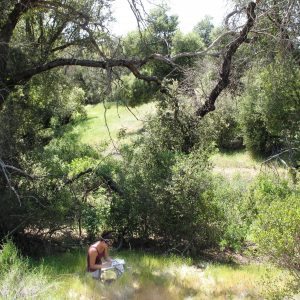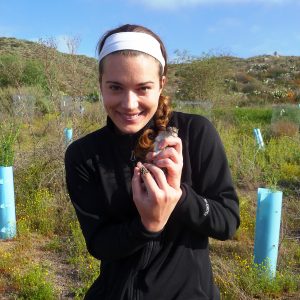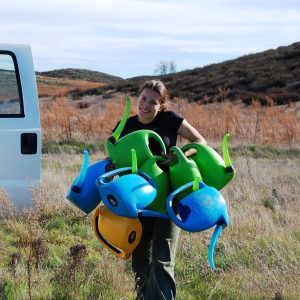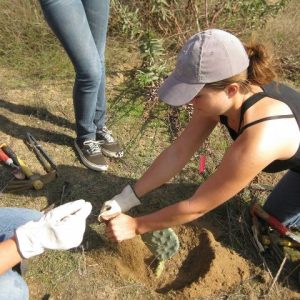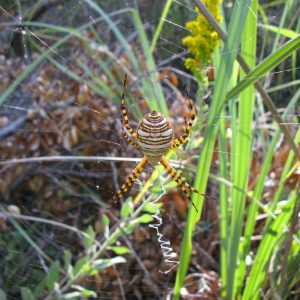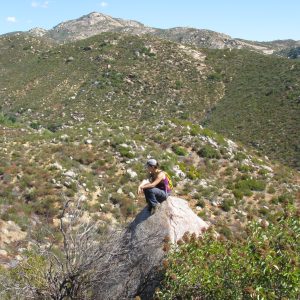One of the projects I get to work on involves germination studies. Germination can be defined differently in an experiment. Some scientists define it as the emergence of the radical (the first root), but for the seed bank here at the safari park it is defined as the emergence of the radical and the emergence of at least one cotyledon (first leaf). This is because some seeds may have enough energy to produce the tip of a root but then lack the ability to develop further.
When seeds are placed into a long term cold storage facility they can remain viable for decades, but when they go dormant for that length of time it can be a very difficult to get them to “wake up” again. In nature seed germination is triggered by a variety of factors; fire, water, and temperature changes are some of the main contributors to germination. To test the germination ability of seeds that have been placed into storage we have to try different triggers on them. In order to determine which triggers are effective, scientists look at a things like the natural habitat of the species and what triggers have worked on closely related species. Coming up with the correct combinations can be a time consuming, yet fascinating puzzle. The process is further complicated by the fact that species require different combinations depending on how long they have been in storage. For example, a trigger that works for seeds that have been stored for ten years may not work for seeds that have been stored for fifty years. Another complicating variable is that even within the same species different populations may be reproductively isolated enough that their seeds have different requirements, and just to add insult to injury, the same population of individuals may differ slightly year to year due to environmental conditions. Despite all these frustrating details that have to be taken into account, germination testing is an extremely important area of study, because whats the point of seed banks if we are unable to use the seeds?
At the Safari Park, seeds that are to be tested are chosen based on the length of time the have been in cold storage. Twenty or so seed lots that have been placed into storage around the same time period are removed and soaked in water over night before different triggers are tested on them. For some seed lots this initial soaking is the only stimulus they need. Some of the other tests we perform include:
Smoke Water:
In nature, one environmental condition that triggers germination is fire. Either heat, the chemicals released by burned plant matter, or a combination of the two causes seeds to come out of dormancy. To mimic the chemicals released by burned plants we collect samples of different chaparral species and turn them into charcoal, which is then mixed in water to give us “smoke water”. In some cases, when this water is absorbed through the seed coat it triggers the seed to grow.
Running Water:
For some species, especially those that live in very dry areas like the desert, being triggered by only water can be a bad thing. For example, if rain fell for too short of a time period and triggered the germination and growth of a species, that species would not have enough resources to reach maturity. One way that seeds measure the amount of rainfall is by the amount of small abrasions they receive. When there is enough water to tumble them over rocks and sand (which cuts up their seed coats and causes small abrasions), seeds “know” that there is enough of the resource to sustain them through their life cycle so that they can reproduce. The small abrasions allow the water to penetrate the seed coat. To replicate this process we run water over seeds and gravel so that they rub together in a similar way.
Cold Stratification:
One of the other tests we do is expose the seeds to different temperatures. Seeds “know” when it is time to grow by measuring the changes in the seasons. The passage of time is determined by the changes in temperature. Winter exposes the seeds to a long cold period and plants will germinate in expectation of the Spring that is to follow. The length and degree of the gold snap varies buy the theory behind it remains the same.
The whole process of germination testing is really interesting and really annoying, but I’m glad I got to learn about it in my internship.

